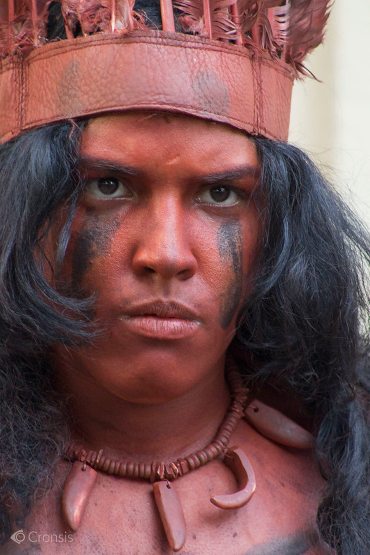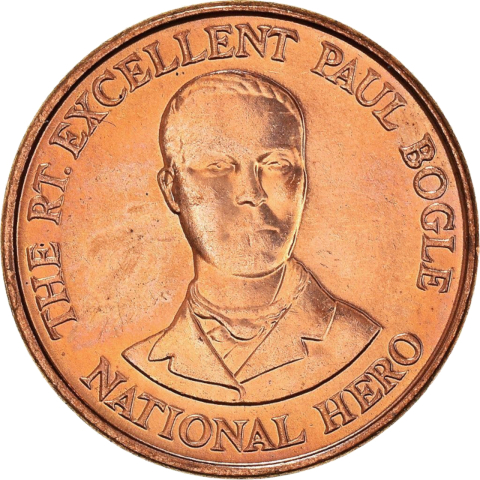Third World’s reggae anthem about the execution of Jamaican preacher and freedom fighter Paul Bogle. The company with the rights prevents you from directly seeing it here, but click on the link in the above to see the video. And understand how this is another way that Caribbean history is under the control of others.
An alternative approach to examining
and studying Caribbean History
by Desmond Bollers
t is difficult to find a single exhaustive catalog of the resistance of the non-European peoples of the Caribbean to European conquest, dispossession, domination, enslavement and ultimately, genocide. Additionally, teaching of Caribbean history is usually siloed by colonial possession with students in the English-speaking Caribbean being taught “West Indian” history while those in the French-speaking Caribbean learn only about the history of the former or current French colonies/ Départements. In the former Spanish colonies, possibly because they are larger, students learn only their own national history.
The free online course titled “Freedom Fighters of the Caribbean” endeavors to overcome this problem by covering the history of the Caribbean in its entirety – the islands of the Caribbean Sea as well as the lands of the Caribbean littoral and adjacent territories such as the Guianas.
The reason for this approach is that the Native Americans suffered the same fate – dispossession, enslavement and, in some cases, genocide regardless of the nationality of the colonial oppressors. The horror of slavery was the same regardless of the nationality of the enslaver. The lash of the whip was just as cruel whether the one wielding the whip spoke Danish, Dutch, English, French or Spanish. As the Trinidadian calypsonian Black Stalin put it in his 1979 “Caribbean Man” Afro- Caribbeans are “One race ………From de same place ………Dat make de same trip …….On de same ship.”
The history books about the Caribbean give full coverage to the contests among the European powers to settle the islands and territories of the Caribbean and to capture territory from each other and the various types of administrative structures put in place by the Europeans to manage their colonies and to control and exploit first the Native Americans and later the enslaved Africans whose labor produced the goods that led to the wealth of those nations. The books present painfully detailed accounts of the battles, both on land and at sea and the diplomatic contests among the Europeans contending for dominance in the Caribbean.
A depiction of Taino resistance leader Caonabo, kidnapped by Columbus from Hispaniola on his first voyage. On his fourth voyage Columbus faced more ferocious and at the moment successful indigenous resistance in Panama. Photo by Brandy Calderón.
However, these same history books, even those written by persons born in the Caribbean, generally provide very little detail about the efforts of the original inhabitants to retain possession of the lands of their ancestors in the face of the assault launched against them by the European interlopers. The narrative appears to suggest that the Tainos and Kalinago simply wilted and capitulated without a fight. The names of their leaders are not well known, and the details of their courageous struggles are not fully described in the history books. The same holds true for the leaders of the enslaved Africans. Instead, we are regaled with tales of the exploits of Henry Morgan, Walter Raleigh, Ponce De Leon, Juan Esquivel, D’Esnambuc or various French and Dutch pirates, privateers or administrators. The contemporary history of the Caribbean treats Native Americans and Africans almost akin to inanimate objects that are acted upon rather than actors in their own right.
As such, what is presented as “Caribbean History” could more appropriately be titled “History of Europeans in the Caribbean.”
We must correct this regrettable state of affairs by bringing the peoples of the Caribbean to center stage of the region’s history instead of depicting them as bit players on the sidelines of their own story as has been the case so far, thereby installing them into their rightful place in history.
Whereas in the Spanish-speaking and French-speaking Caribbean, Native Americans, maroons and enslaved Africans who led revolts against European oppression are sometimes honored with statues, that is rarely the case in the English-speaking countries. For example, in Puerto Rico there are statues of Native American freedom fighters, in Cuba and the Dominican Republic there are statues of both Native American and African freedom fighters and in Guadeloupe and the (formerly Danish) Virgin Islands there are statues of African freedom fighters.
Students in the Caribbean could benefit from being more informed about the persons who fought for their freedom as individuals or who sought to obtain freedom for entire groups of the oppressed or enslaved and who so often gave their very lives to bring this abominable institution to an end. Learning of their resolute bravery is a first step towards granting them the recognition they deserve as Caribbean heroes.
So, when studying our history, we need to break out of the mental silos imposed on us by our colonial past and appreciate that regardless of language we, the peoples of the Caribbean, all share the same history of resistance to oppression and exploitation. Arriving at this conclusion will enable us to transcend the barriers that currently separate us from each other.
Paul Bogle as depicted on a Jamaican dime.
Follow me on Facebook at https://www.facebook.com/desmoBndbollers2 or visit https://www.caribfree.net/
Contact us by email at thepanamanews@gmail.com
To fend off hackers, organized trolls and other online vandalism, our website comments feature is switched off. Instead, come to our Facebook page to join in the discussion.
These links are interactive — click on the boxes
>












